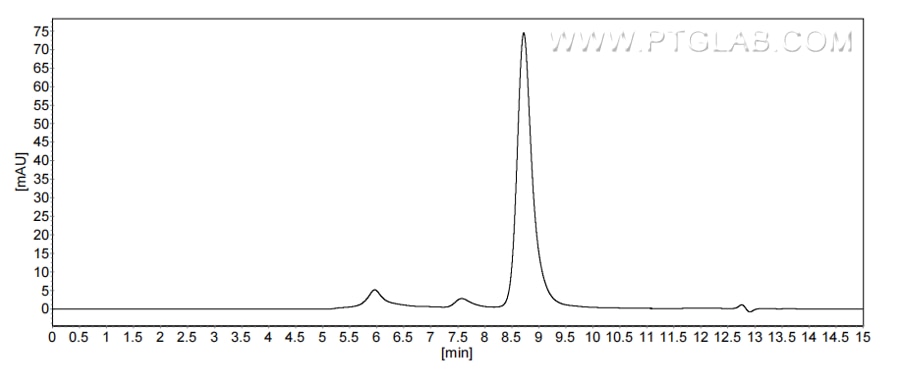Recombinant Human PTH protein (rFc Tag)(HPLC verified)
Species
Human
Purity
>90 %, SDS-PAGE
>90 %, SEC-HPLC
Tag
rFc Tag
Activity
not tested
Cat no : Eg3191
Validation Data Gallery
Product Information
| Purity | >90 %, SDS-PAGE >90 %, SEC-HPLC |
| Endotoxin | <0.1 EU/μg protein, LAL method |
| Activity |
Not tested |
| Expression | HEK293-derived Human PTH protein Ser32-Gln115 (Accession# P01270) with a rabbit IgG Fc tag at the C-terminus. |
| GeneID | 5741 |
| Accession | P01270 |
| PredictedSize | 35.7 kDa |
| SDS-PAGE | 37-46 kDa, reducing (R) conditions |
| Formulation | Lyophilized from 0.22 μm filtered solution in PBS, pH 7.4. Normally 5% trehalose and 5% mannitol are added as protectants before lyophilization. |
| Reconstitution | Briefly centrifuge the tube before opening. Reconstitute at 0.1-0.5 mg/mL in sterile water. |
| Storage Conditions |
It is recommended that the protein be aliquoted for optimal storage. Avoid repeated freeze-thaw cycles.
|
| Shipping | The product is shipped at ambient temperature. Upon receipt, store it immediately at the recommended temperature. |
Background
Parathyroid hormone (PTH), also known as parathormone or parathyrin, is a critical peptide hormone that plays a vital role in calcium homeostasis within the human body. Secreted by the parathyroid glands, which are typically located behind the thyroid gland in the anterior neck, PTH is composed of 84 amino acids and is essential for maintaining serum calcium levels. The regulation of calcium is crucial not only for bone health but also for various physiological processes including muscle contraction, nerve function, and blood coagulation.Excessive secretion of PTH, often leading to hypercalcemia (elevated calcium levels) and associated symptoms such as kidney stones, osteoporosis, and neuropsychiatric disturbances. Conversely, insufficient PTH secretion can lead to hypocalcemia (low calcium levels), which may cause muscle cramps, spasms, and convulsions.
References:
1.Dawale K,Agrawal A. (2022). Cureus. 14 (10):e30251. 2.Tang PK, et al. (2021)Vet J. 275:105719. 3.Jugade SC,Bhalchim S,Karkhanis A. (2022). Contemp Clin Dent. 13 (4):395-398.


